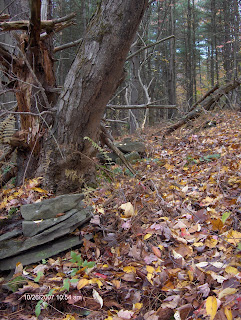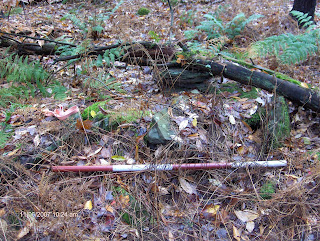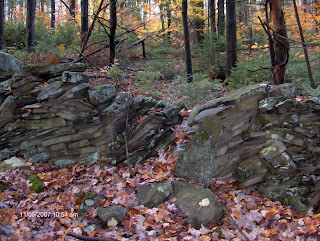We've got quite a bit of snow right now and more is expected tomorrow. I don't know how much I'll be able to post through the winter, if we don't get a thaw between now and April.
I've been seeing some interesting things roadside, and managed to get a few pictures.
On one back road, there is a series of roadside cairns that make up part of a fence. The interesting thing is that, at first, it appears the cairns are part of a stone wall. In one spot, there is a piece of wood, like a fence pole, between cairns. Later down the road, there are just a few cairns with no stone wall and no wood poles in between.
These photos are from the end of the wall where the cairns are attached to the stone wall, and one near where the fence pole was in between. In the third photo, you can see a stone wall in the background that runs up the hill, into the property.



I find roadside cairns confusing. This is because I've seen roadside cairns being constructed by homeowners, so they are obviously not pre-colonial or colonial, but some have an ancient look to them. I believe they could be confused with Native American cairns.
I thought I could use, as a rule of thumb, the fact that roadside cairns are 'in a line' to be able to say that they are recent construction. However, there are small cairns (1 to 3 foot high) that line an abandoned road in Delaware State Forest. They are obviously not recent construction. What is further confusing is that I found a line of similarly built cairns nearby, but not lining any road. Then, there is another line of small cairns I've found, also not lining a road, but their construction is different. They are not as organized. I have some photos of those that I will post here shortly. All of these cairns are located within an approximately 115 acre parcel. If you expand that by about another 100 acres, it would include the large cairn site, and what I believe is a grid, that is in Delaware State Forest. They are all connected.

















































